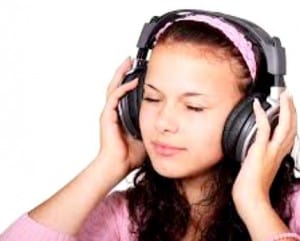It is universally accepted that growing up is an awkward and stressful time. Our bodies are changing, more pressure is put upon us academically, we’re fighting independence with the need to be still parented, and the whole time we’re worrying that we are the only ones who feel the way we feel. Anxiety is a normal part of a teenager’s life, but when that anxiety takes over or becomes excessive, it can have a big effect on a teenager’s behavior, ability to learn, and social life. Moreover, the Anxiety and Depression Association of America (ADAA) estimates that General Anxiety Disorder (GAD) affects 1 in 8 children, and as many as 80% of those with diagnosable anxiety disorders go untreated.

iLs programs, in combination with other methods of treatment, can help your child manage symptoms of general anxiety disorder.
When anxiety and depression are left untreated
GAD in children and teens is more than just a restless night due to a scary movie or an upcoming test. In those cases, a child can be comforted and the anxiety subsided, and once the test is over, the teen returns to normal. However, children and teens with untreated GAD will often have continued trouble in school, poor self-esteem, and trouble engaging in social activities, and can get into substance abuse.
Childhood anxiety can manifest itself in many ways, such as:
- Irrational phobias
- Panic attacks
- Separation anxiety
- Obsessive Compulsive Disorder (OCD)
- Depression
- Sleep problems
Childhood anxiety can also occur as symptoms of:
- Post Traumatic Stress Disorders (PTSD)
- Attention Deficit and Hyperactivity Disorder (ADHA)
- Brain trauma and injuries
- Eating disorders

iLs programming can help address symptoms of general anxiety disorder in children and teens.
Manage symptoms of anxiety in children and teens
The more aware we are that anxiety is a real problem facing children and teens today, the sooner we can begin to support and help them manage their anxiety.
iLs complements both behavioral and pharmaceutical approaches by working at the physiological level, requiring the “thinking brain” to attend while simultaneously “exercising” areas of the lower brain (sub-cortical) and body involved in regulation and information processing.
Integrated Listening Systems (iLs) associates have conducted several case studies using multi-sensory programs for children with GAD, as well as anxiety brought on by a brain injury, ADHD, or other disorders. iLs programs work alongside other traditional therapies and treatment methods. Conventional treatments typically take a biological or pharmaceutical approach, whereas iLs programming takes a physiological approach to addressing anxiety. Implementing iLs programming alongside traditional treatments has shown improvements in:
- concentration
- communication
- reduced anxiety and nervousness



 © 2025 Unyte Health US Inc.
© 2025 Unyte Health US Inc.